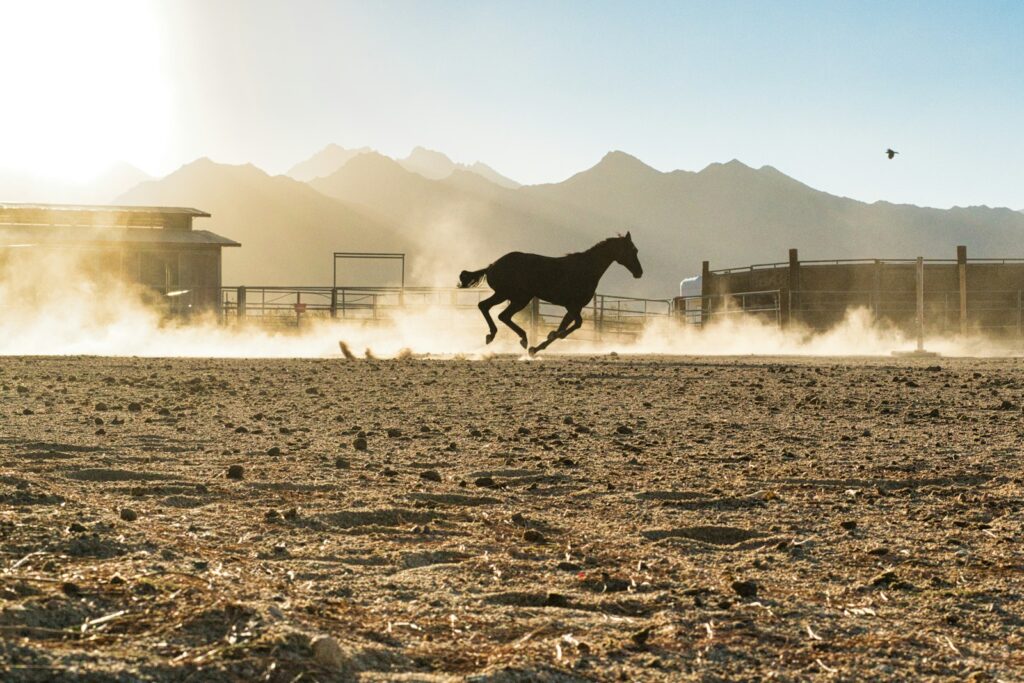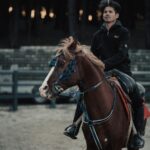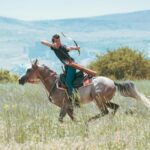In an era dominated by machinery and automation, there exists a remarkable subset of American ranches that continue to embody the authentic spirit of the Old West. These working ranches have deliberately chosen to maintain traditional methods of cattle management, with horses serving as the primary power source rather than ATVs or other modern vehicles. Beyond mere nostalgic preservation, this approach reflects a deep understanding of land stewardship, livestock handling, and environmental sustainability. Today’s horse-powered ranches represent living history while simultaneously demonstrating practical alternatives to fossil fuel-dependent ranching. From the sprawling grasslands of Montana to the rugged desert terrain of Arizona, these operations showcase the enduring partnership between skilled riders, well-trained horses, and the land that sustains them both.
The Ladder Ranch: New Mexico’s Conservation Pioneer

Nestled in the high desert of southern New Mexico, the spans over 156,000 acres and represents one of the most innovative horse-powered operations in the American Southwest. Owned by media mogul and conservationist Ted Turner, the ranch combines traditional horse-based cattle management with cutting-edge conservation efforts. Ranch hands exclusively use horses to move cattle across the property’s varied terrain, allowing them to access remote areas impossible to reach with motorized vehicles. This approach minimizes soil erosion and disturbance to the delicate desert ecosystem while maintaining a healthy grassland environment. The Ladder’s commitment extends beyond cattle management to include substantial wildlife conservation programs for endangered species like the Mexican gray wolf and the Bolson tortoise, proving that traditional methods can coexist with modern conservation science.
The Padlock Ranch: Wyoming’s Sustainable Legacy
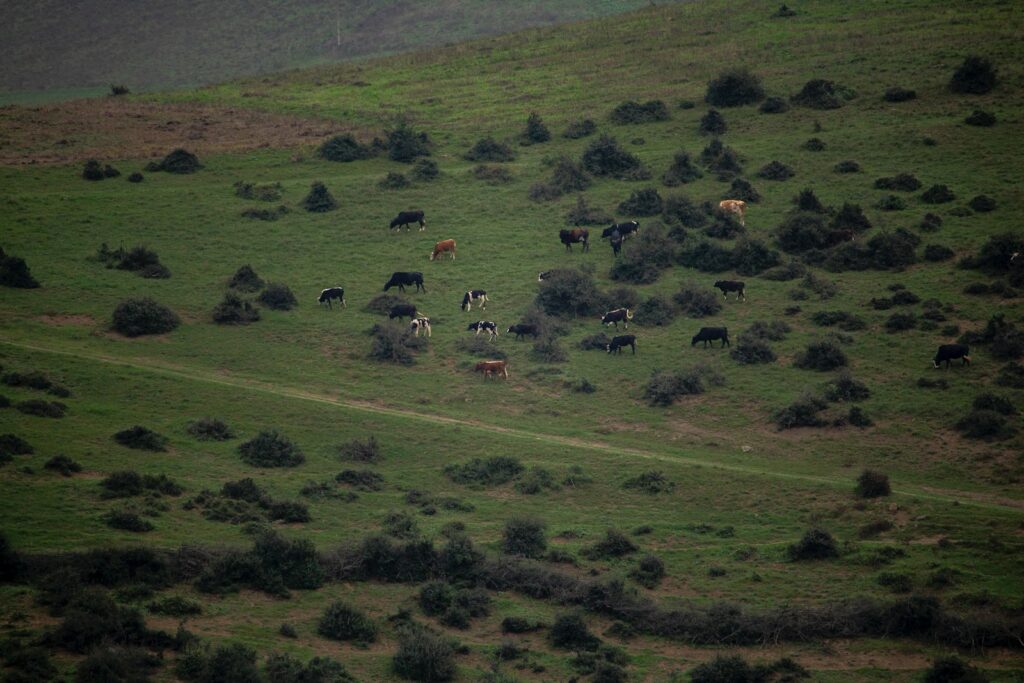
Stretching across 475,000 acres on the Montana-Wyoming border, the Padlock Ranch stands as a testament to sustainable ranching through traditional horsemanship. Established in 1943 by Homer and Mildred Scott, this operation has resisted the industry trend toward mechanization, maintaining a remuda of over 100 working quarter horses to manage its 11,000 head of cattle. What makes Padlock truly unique is its integration of horse power with modern range management science—cowboys on horseback gather data on grass conditions and cattle health that informs the ranch’s rotational grazing program. The family-owned operation has received numerous environmental stewardship awards for its soil conservation practices, many of which are directly tied to the reduced impact of using horses rather than heavy machinery. Ranch manager Trey Patterson often notes that horses allow for more precise cattle handling while creating virtually no soil compaction compared to vehicles.
Focus Ranch: Colorado’s Guest Ranch Working Experience
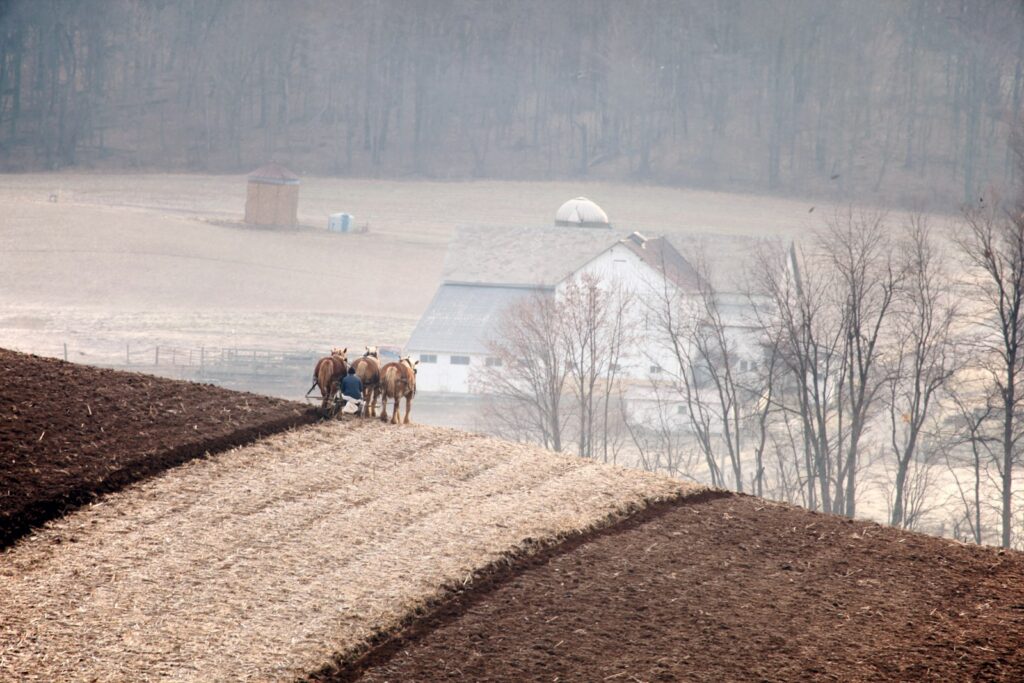
Located in the northwestern corner of Colorado near the Wyoming border, Focus Ranch offers a distinctive blend of authentic working ranch operations and guest experiences. Unlike many guest ranches that merely simulate ranch work, Focus invites visitors to participate in genuine horse-powered cattle management alongside experienced ranch hands. The 7,000-acre operation maintains a strict no-ATV policy, requiring all cattle work to be conducted from horseback across mountainous terrain that rises from 7,000 to 9,000 feet in elevation. Owner Terry Reese believes this approach preserves the craft of horsemanship while providing practical benefits—horses can navigate snowdrifts, cross streams, and climb steep hillsides that would stop mechanized vehicles. During calving season, ranch hands still make their rounds on horseback, checking on new mothers and calves while minimizing stress on the animals compared to the noise and disruption of engines.
Chico Basin Ranch: Colorado’s Educational Horse-Powered Operation
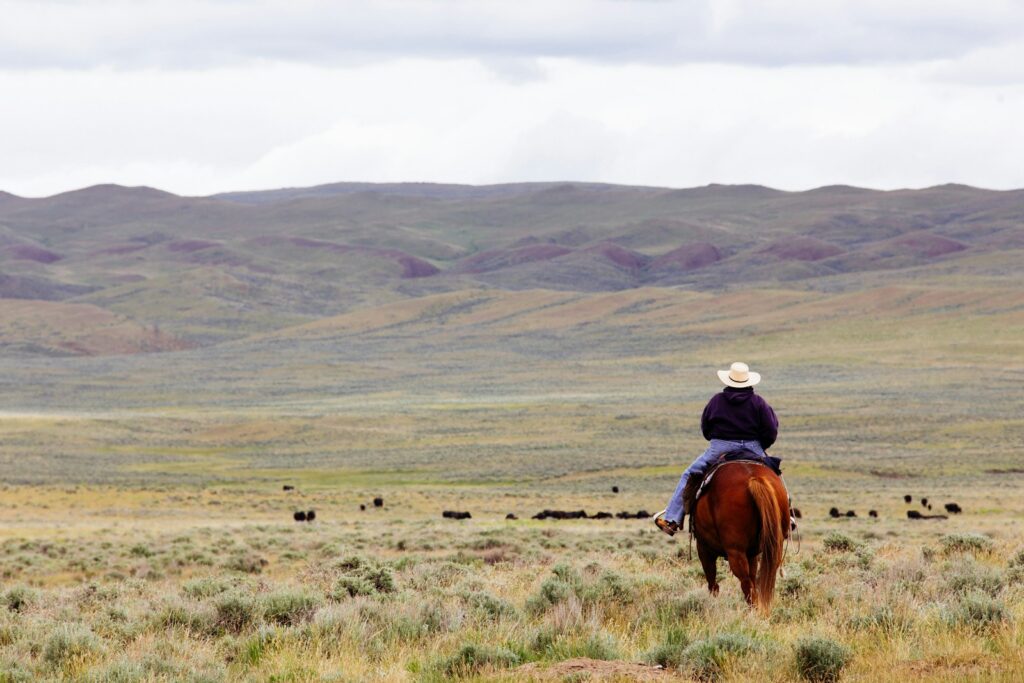
The Chico Basin Ranch encompasses 87,000 acres of shortgrass prairie in Colorado, operating under a unique 25-year lease agreement with the State Land Board that prioritizes conservation alongside cattle production. What distinguishes this working ranch is its educational mission combined with strict adherence to traditional horse-powered methods. Ranch manager Duke Phillips maintains a team of nearly 50 working horses, considering them essential partners rather than replaceable tools. The ranch offers internship programs that specifically teach horseback cattle handling, low-stress livestock management, and natural horsemanship to a new generation of ranchers. Chico Basin’s horse-dependent approach has allowed for the restoration of native grasslands through carefully controlled grazing patterns that would be impossible to achieve with motorized vehicles. Their horse program also extends to wild horse gentling and training, creating useful working animals from Bureau of Land Management mustangs that might otherwise face uncertain futures.
The Waggoner Ranch: Texas Tradition on an Epic Scale
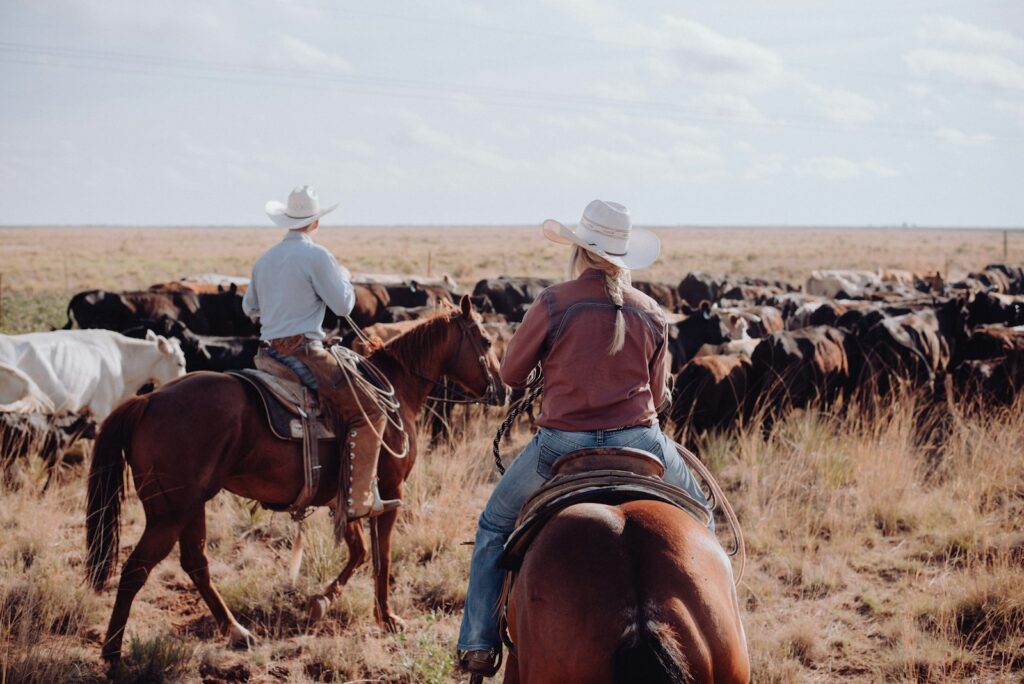
The historic Waggoner Ranch in Texas, recently sold after being in the same family for 167 years, continues to maintain one of the largest horse-powered operations in America. Spanning approximately 535,000 acres—making it larger than Los Angeles and New York City combined—this legendary ranch keeps over 1,000 quarter horses to work its substantial cattle operation. The ranch’s horse program is so renowned that it maintains its own distinctive bloodline, with Waggoner-bred horses highly sought after throughout the Southwest for their cow sense and durability. Ranch managers cite practical reasons for maintaining this massive horse program despite the availability of modern alternatives—horses can cover vast distances efficiently without fuel costs, navigate the ranch’s varied terrain regardless of weather conditions, and provide cowboys with elevated vantage points essential for spotting cattle in brush country. The Waggoner’s commitment to horse power represents not just tradition but a pragmatic business decision that has sustained one of America’s most iconic ranches through nearly two centuries of operation.
Demonstration Ranch: Montana’s Horse-Powered Regenerative Agriculture
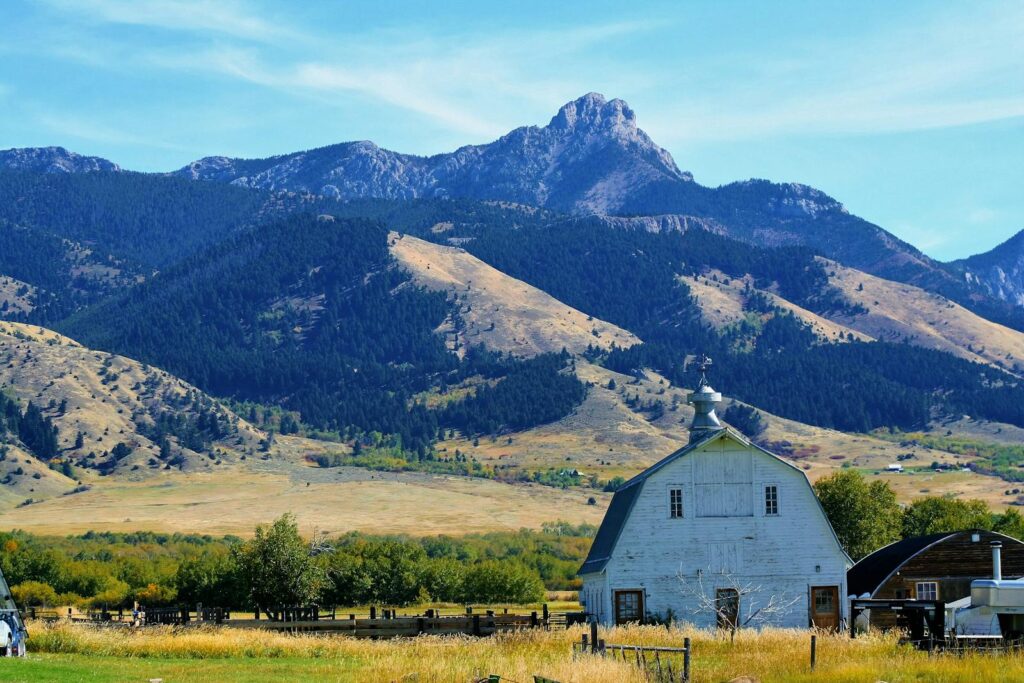
Located in the Blackfoot Valley of western Montana, the aptly named Demonstration Ranch serves as a living laboratory for regenerative agriculture powered entirely by horses. Beyond simply using horses for cattle management, this innovative operation employs draft horses for all aspects of farming, including plowing, planting, and harvesting feed crops for their livestock. Founded by organic farming pioneers Bob Quinn and Courtney White, the ranch demonstrates that commercial-scale agriculture can function efficiently without fossil fuels. Their Belgian and Percheron draft teams pull specially designed modern implements that have been adapted for horse power, showing that traditional methods can incorporate technological improvements without sacrificing sustainability. The ranch’s operations have documented significant improvements in soil carbon sequestration compared to conventional mechanized operations, with their horse-worked fields showing measurably higher organic matter content and water retention capacities.
The Zapata Ranch: Conservation Through Traditional Methods
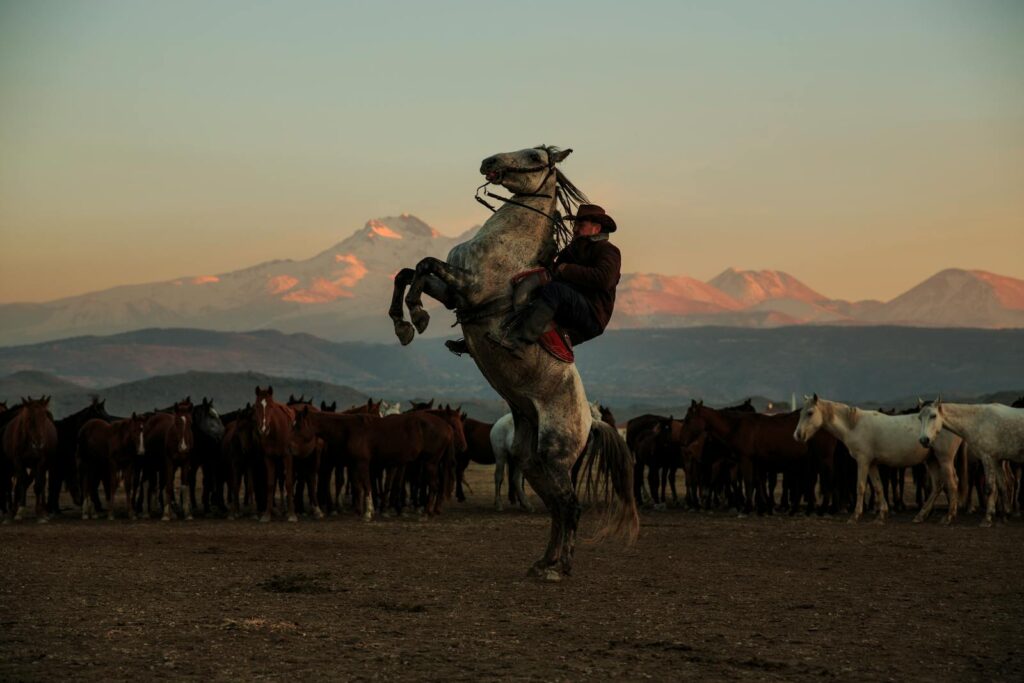
The Zapata Ranch, owned by The Nature Conservancy and managed by Ranchlands, spans 103,000 acres at the foot of Colorado’s Sangre de Cristo Mountains. This unique property operates a commercial bison and cattle operation entirely through horse power while simultaneously managing the land for conservation outcomes. What makes Zapata extraordinary is how it uses traditional horsemanship to achieve modern conservation goals—cowboys on horseback carefully move bison herds to mimic historical grazing patterns essential for grassland health. The ranch maintains a remuda of over 60 working horses, each specifically trained to work with both cattle and the more unpredictable bison herds. Ranch manager Kate Matheson emphasizes that horses create minimal disturbance when working with wild bison, allowing for more natural behavior observation and safer handling of these powerful animals. The ranch’s horse-centered approach has helped restore thousands of acres of degraded grassland and wetland habitat while maintaining a profitable agricultural operation.
The Big Creek Ranch: Wyoming’s High-Altitude Horse Specialists
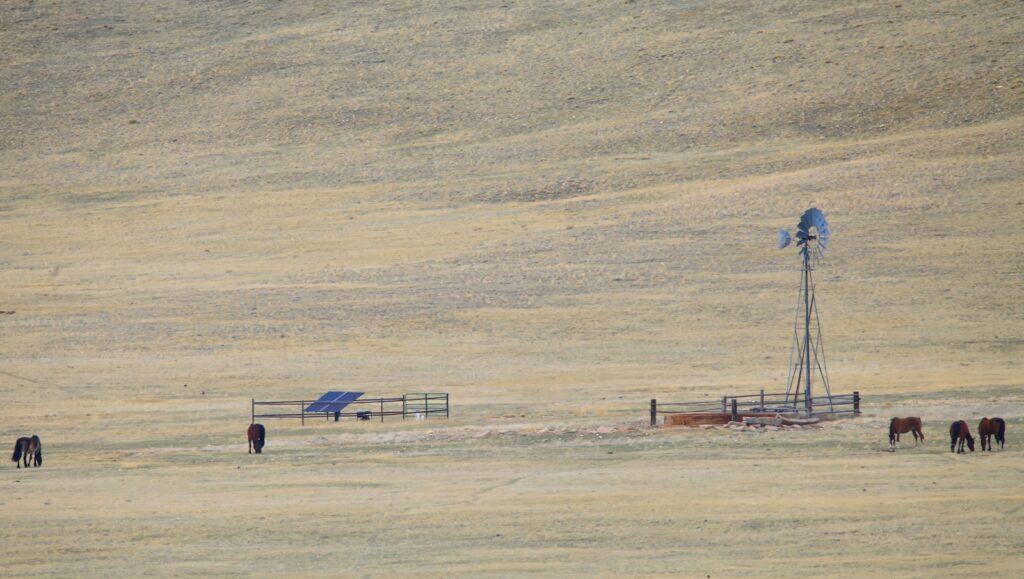
Big Creek Ranch in Wyoming’s Absaroka Mountain Range represents one of the most extreme environments where horse power remains not just traditional but necessary. Situated at elevations ranging from 7,000 to 10,000 feet, this working cattle operation contends with deep snow, steep terrain, and remote pastures that simply cannot be accessed by motorized vehicles for much of the year. Ranch manager Casey Terrell maintains a specialized herd of nearly 40 mountain-bred horses, selected specifically for their sure-footedness in rocky terrain and endurance at high altitudes where thin air would cause engine performance issues in vehicles. The ranch’s seasonal cycle revolves entirely around their horses’ capabilities—summer cattle drives navigate narrow mountain passes where no road exists, while winter feeding operations employ horse-drawn sleighs across snowfields too deep for even specialized snow machines. During spring calving, when mountain weather can change dramatically within hours, ranch hands rely on horses that can safely bring a distressed cow and calf back to shelter regardless of sudden blizzards or washed-out trails.
The Matador Ranch: Montana’s Century-Old Horse Tradition
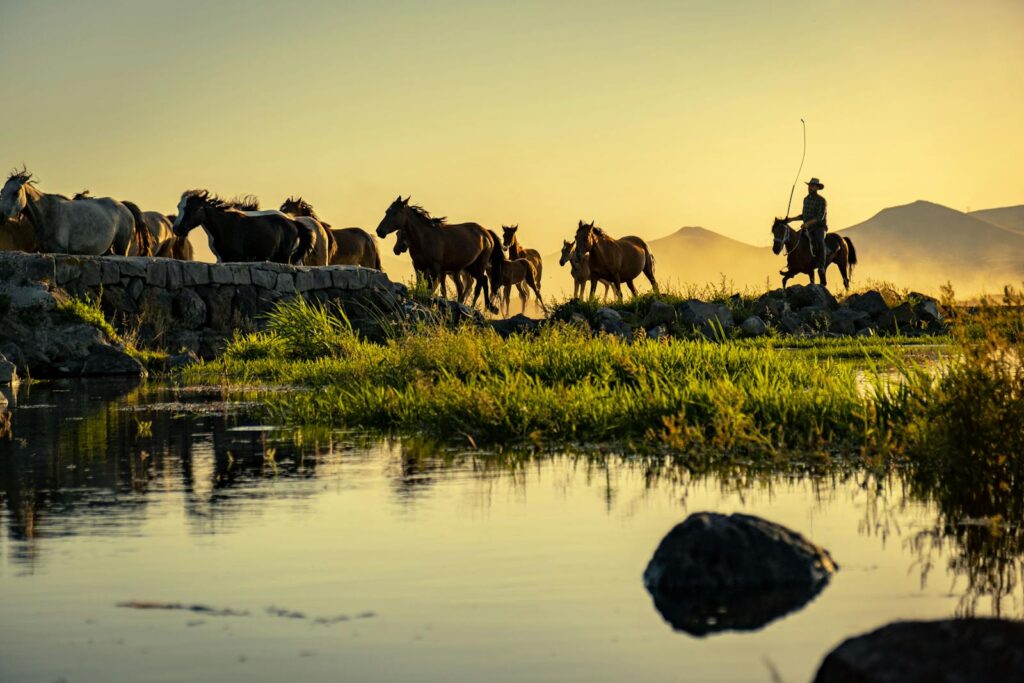
The historic Matador Ranch in Montana maintains one of the longest continuous traditions of horse-powered ranching in America, having operated since the 1880s with minimal concessions to mechanization. Now owned by Koch Industries, this 250,000-acre operation continues to use horse power for virtually all aspects of its extensive cattle operation. What distinguishes the Matador is its systematic breeding program that has maintained a specific type of ranch horse for over a century—horses bred specifically for the ranch’s combination of open range and rough breaks terrain. The ranch employs a “wagon boss” system rarely seen in modern times, where remote cow camps operate with teams of cowboys living in mobile wagon quarters for weeks at a time, completely dependent on their horses for transportation and work. Ranch horse trainer Jake Clark notes that the Matador’s horses develop exceptional “savvy” from constant work—able to anticipate cattle movements, navigate in darkness when necessary, and endure the extreme weather conditions of the northern plains.
Babbitt Ranches: Arizona’s Horse-Powered Desert Operation
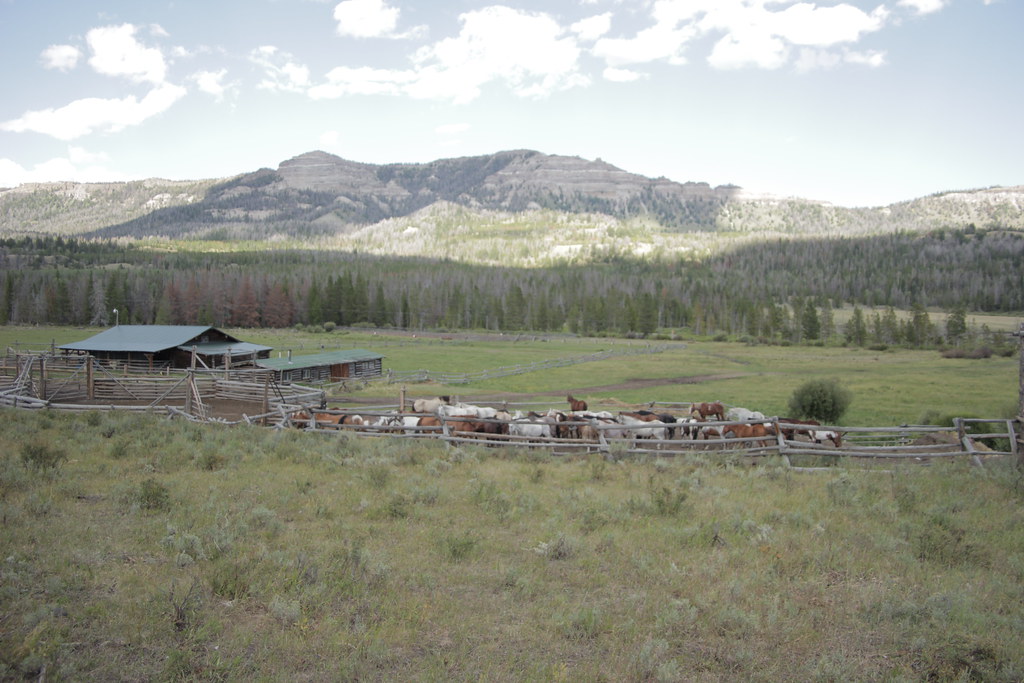
Spanning over 700,000 acres of Arizona’s high desert plateau, Babbitt Ranches has maintained horse-powered operations since its founding in 1886, adapting traditional methods to the unique challenges of arid rangelands. What makes this operation remarkable is its development of a specific horse breed—the Hashknife horse—tailored to the demands of desert ranching where water scarcity and vast distances create exceptional challenges. Ranch horses must cover extraordinary distances between water sources while having the stamina to work cattle effectively in high temperatures. The Babbitt operation maintains strict horse-only policies for certain sensitive desert environments where vehicle tracks would persist for decades due to the fragile soil crust and minimal rainfall. Ranch manager Billy Cordasco has documented how horse-only management has preserved ancient archaeological sites and delicate desert ecosystems that would have been damaged by motorized access. Their annual Hashknife Colt Sale has become legendary among working ranch horse buyers seeking animals with the desert hardiness this program has developed over generations.
The IX Ranch: Montana’s Horse-Powered Commercial Enterprise
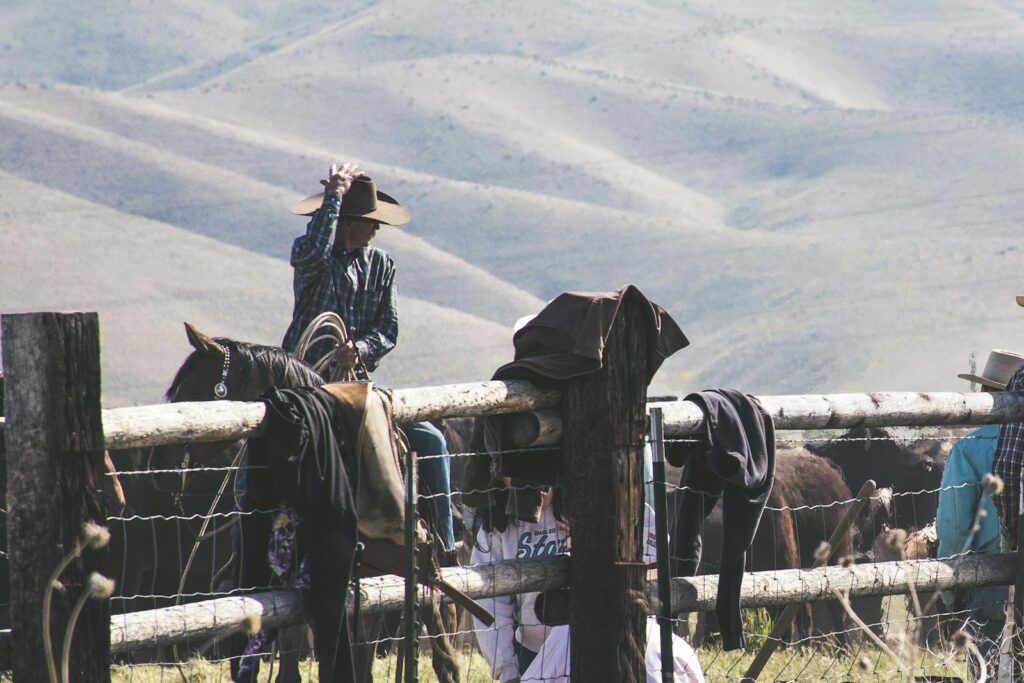
The IX Ranch near Big Sandy, Montana, demonstrates that traditional horse power can remain economically viable in modern commercial ranching. Operating over 126,000 acres and maintaining a herd of approximately 4,500 cattle, the IX has calculatingly chosen to remain horse-powered for economic rather than nostalgic reasons. Ranch manager Richard Roth maintains detailed cost analysis comparisons between horse and mechanized operations, finding that their 60-horse remuda represents significant cost savings when factoring maintenance, fuel, depreciation, and the ability to produce replacement stock internally. The ranch’s financial approach to horsemanship is reflected in their specialized breeding program that produces horses specifically suited to the ranch’s topography and working style. IX Ranch horses must develop specific skills for the property’s combination of open prairies and steep coulees, with ranch hands riding the same mounts year-round rather than rotating through the remuda, creating exceptionally well-trained working partnerships.
The White Stallion Ranch: Preserving Historical Methods for Future Generations
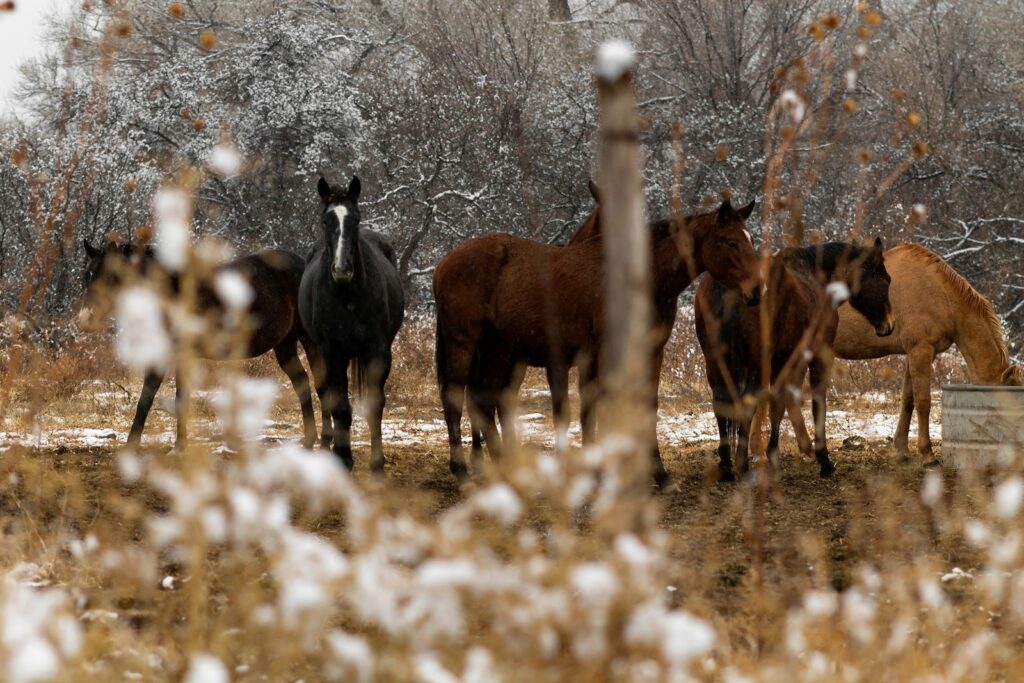
While many working ranches maintain horse power for practical purposes, the White Stallion Ranch near Tucson, Arizona, has developed a unique dual purpose—operating as both a functional cattle ranch and an educational center for traditional horsemanship. Owned by the True family for three generations, this operation maintains a herd of over 150 working horses and conducts genuine cattle work entirely on horseback while simultaneously training both aspiring ranch hands and interested visitors in historical methods. The ranch has established a formal apprenticeship program specifically focused on preserving endangered skills like tracking cattle by reading sign, low-stress herding techniques that rely on horse positioning rather than force, and traditional rawhide braiding for practical equipment making. What distinguishes White Stallion is its commitment to documenting traditional methods with modern technology—they produce instructional materials and video documentation of techniques that might otherwise be lost as older generations of ranch hands retire. Ranch owner Russell True emphasizes that their mission extends beyond their own operation to ensuring these horse-powered methods survive for future generations of land stewards.
The Future of Horse-Powered Ranching in America
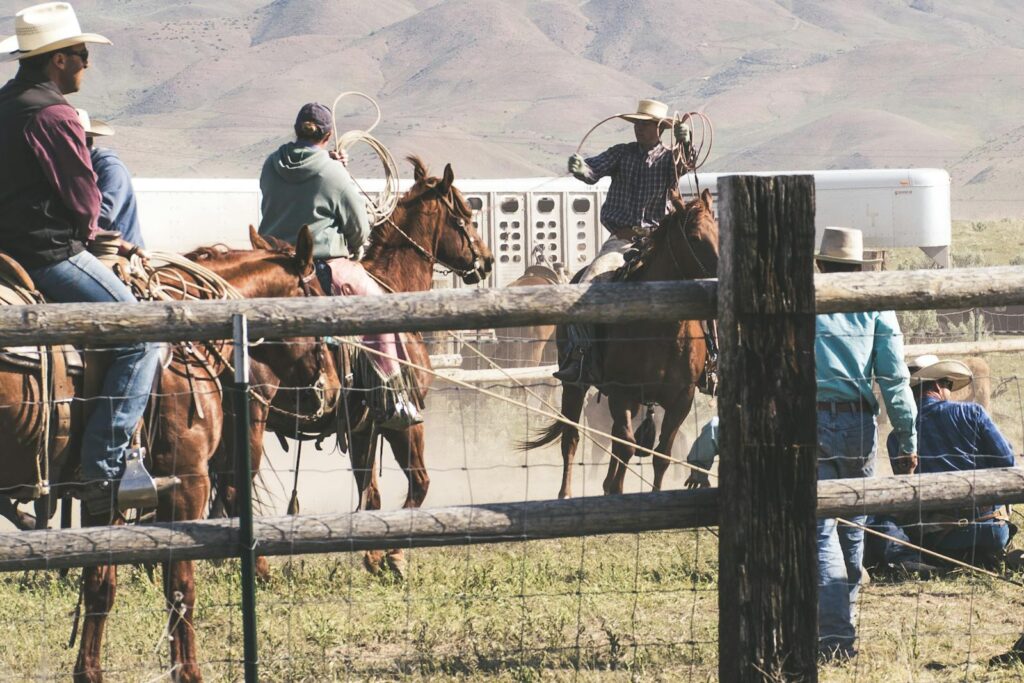
Despite the overwhelming trend toward mechanization in agriculture, horse-powered ranching appears to be experiencing a modest renaissance driven by multiple factors. Environmental considerations play an increasingly important role as ranchers recognize the reduced carbon footprint, minimal soil impact, and decreased wildlife disturbance that horse operations provide. Economic factors also contribute, particularly as volatile fuel prices and expensive equipment maintenance make horse power financially competitive for certain operations. Perhaps most significantly, consumer preferences have shifted toward beef produced through traditional, sustainable methods, creating premium markets that horse-powered ranches are uniquely positioned to serve. Organizations like the Horse-Powered Farmers Association, originally focused on small-scale agriculture, have expanded to include ranching operations, creating knowledge-sharing networks that help operations transition back to traditional methods. While horse-powered ranches will likely remain a minority within American agriculture, their continued existence represents not just preservation of historical practices but viable alternatives as the industry faces increasing environmental and economic challenges in the twenty-first century.
The continued existence of horse-powered working ranches across America represents far more than nostalgic preservation of Western heritage. These operations demonstrate practical alternatives to fossil fuel-dependent agriculture while maintaining vital knowledge and skills that have sustained ranching communities for generations. As the ranching industry confronts new challenges from climate change to economic pressures, these traditional approaches offer surprising relevance—providing low-impact land management, reduced operating costs, and market differentiation through authentic production methods. The horseback cowboys working America’s rangelands today aren’t simply living history; they’re custodians of sustainable practices that may prove increasingly valuable as agriculture evolves in the twenty-first century. Their stories remind us that sometimes the most enduring innovations aren’t technological advances but the perfected relationships between humans, animals, and the land they both depend upon.

